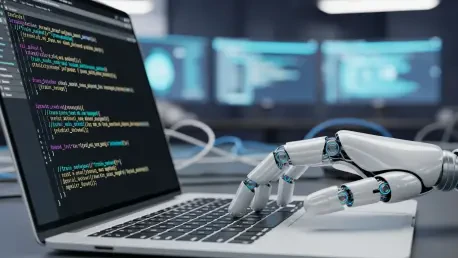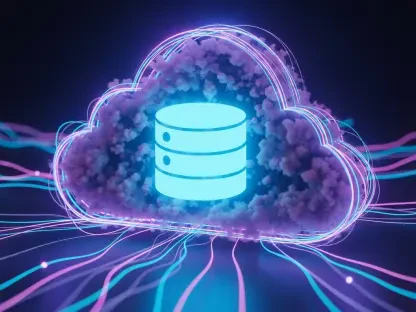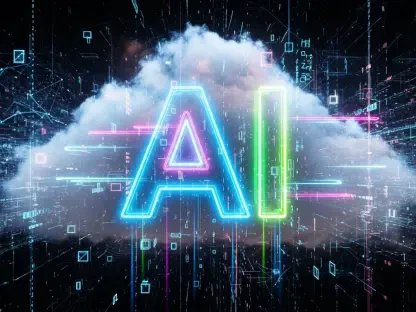I’m thrilled to sit down with Anand Naidu, a seasoned development expert with a mastery of both frontend and backend technologies. Anand brings a wealth of knowledge about various coding languages and a keen understanding of the rapidly evolving world of artificial intelligence. Today, we’re diving into the transformative shifts in the large language model (LLM) open-source ecosystem, exploring the dramatic updates in the Panoramic Map 2.0, the explosive growth in AI coding, the turnover of major projects, and the emerging trends shaping the future of intelligent agents and infrastructure.
How would you describe the significance of the “Panoramic Map of the Large-Model Open-Source Development Ecosystem 2.0” for those new to this space?
This map is essentially a comprehensive guide to the current state of open-source projects in the large-model ecosystem. Released by a dedicated open-source team, it captures 114 projects across 22 fields, highlighting what’s hot and what’s not in AI development for 2025. It’s a critical tool for developers, researchers, and enterprises to navigate the chaotic and fast-moving world of AI, offering a clear snapshot of key players, trends, and technological shifts. Think of it as a roadmap for over-achievers who want to stay ahead of the curve.
What are the biggest differences you’ve noticed between this 2.0 version and the earlier 1.0 map in terms of how it’s structured and what it prioritizes?
The 2.0 version marks a significant evolution. While 1.0 was more of a broad sketch split into Infrastructure and Application categories, 2.0 gets much more granular, dividing the ecosystem into three distinct sectors: AI Agent, AI Infra, and AI Data. This reflects a sharper focus on today’s trends, especially the rise of intelligent agents as a central theme. The methodology also improved—moving from a narrow starting point of known projects to a broader GitHub ranking system, which captures newer, high-impact projects with greater accuracy.
With 60 projects dropped and 39 new ones added, what do you think is driving such a dramatic shake-up in this ecosystem?
It’s all about the relentless pace of innovation and community dynamics. Many older projects couldn’t keep up with rapid iteration or lacked strong community support, so they faded out. Meanwhile, the influx of new projects—many born after the pivotal “GPT Moment” in late 2022—shows how breakthroughs in AI are sparking fresh ideas and tools. The ecosystem is like a living organism; it’s constantly evolving, with only the most adaptable or impactful projects surviving.
One surprising exit was TensorFlow, once a giant in the field. Can you shed light on why it lost ground to PyTorch?
TensorFlow’s exit from the map is a big deal, but not entirely unexpected. While it was a pioneer, PyTorch gained traction due to its user-friendly design, flexibility, and strong backing from a vibrant community. PyTorch made it easier for developers to experiment and iterate, especially in research settings, which aligned better with the fast-moving AI landscape. TensorFlow, despite its strengths, struggled to maintain that same momentum and community enthusiasm over time.
The median age of projects in this ecosystem is just 30 months. What does this short lifespan reveal about the nature of innovation in AI?
It highlights how incredibly fast-paced and competitive this field is. A 30-month median age means half the projects are younger than two and a half years, which shows that AI, especially large models, is a space where new ideas and technologies emerge almost quarterly. It’s a young, dynamic jungle where obsolescence can hit quickly if you don’t adapt or innovate continuously. This rapid turnover is both a challenge and an opportunity for developers.
Speaking of new projects, 62% have emerged since late 2022. What’s fueling this burst of activity in the open-source AI space?
The “GPT Moment” in October 2022 was a game-changer. It marked a point where generative AI captured massive public and developer interest, proving the potential of large models in real-world applications. This sparked a wave of experimentation, with developers rushing to build tools, frameworks, and agents that leverage these capabilities. The high visibility—evidenced by projects averaging close to 30,000 GitHub stars—also draws more contributors, creating a feedback loop of innovation and growth.
The map’s new classification into AI Agent, AI Infra, and AI Data seems more refined. Why do you think this framework better captures current trends?
This new breakdown mirrors the specialization happening in AI development. The old Infrastructure/Application split was too vague for today’s landscape, where intelligent agents are becoming the focal point of innovation. AI Agent, AI Infra, and AI Data each represent distinct layers of the stack—agents for applications, infra for foundational tools, and data for the fuel that powers models. This structure highlights hotspots like AI agents while clarifying how different pieces fit together in the broader ecosystem.
The AI Agent layer is described as experiencing a “Cambrian explosion.” What’s behind this surge of creativity and new projects in that area?
The AI Agent layer is where we’re seeing the most direct interaction between AI and real-world needs, from chatbots to coding assistants. It’s a “Cambrian explosion” because there’s an unprecedented diversity of ideas and approaches emerging—everyone’s trying to stake their claim on this new frontier. The excitement comes from agents becoming more autonomous and versatile, tackling complex workflows or even integrating with physical systems. It’s chaotic, but that chaos is breeding groundbreaking tools.
AI Coding, in particular, is said to be going “wild.” Can you unpack what’s driving this frenzy and the kinds of advancements we’re seeing?
AI Coding is exploding because it addresses a universal pain point: making development faster and smarter. It’s gone from basic code completion to a full-lifecycle engine, handling everything from writing code to debugging and maintenance. Tools are now multimodal, context-aware, and even support team collaboration. The “wild” growth is fueled by both demand—developers want efficiency—and by new projects that keep pushing boundaries, turning coding into a more intuitive, AI-driven process.
How has AI Coding transformed from simply assisting with code to becoming a comprehensive intelligent engine?
Initially, AI Coding was about filling in lines of code or suggesting snippets—helpful, but limited. Now, it’s evolved into a full-lifecycle system that supports the entire development process. It can draft entire applications, anticipate bugs, optimize performance, and even manage deployment. This shift is powered by better models that understand context, learn from user behavior, and integrate with broader workflows, making AI a true partner in coding rather than just a tool.
What are your thoughts on the future of AI Coding, especially with its predicted commercial potential?
The future of AI Coding is incredibly promising, especially commercially. We’re already seeing paid subscriptions, SaaS models, and premium features emerge as revenue streams. As these tools get smarter—potentially dominating entire workflows from ideation to deployment—the market will grow even more. I think we’ll see tighter integration with enterprise systems and more personalized solutions, but there’s also a risk of monopolization if big players lock developers into closed ecosystems through open-source bait. It’s a space to watch closely.
Lastly, what is your forecast for the open-source LLM ecosystem over the next few years?
I believe we’ll see even more rapid evolution, with the AI Agent layer continuing to dominate as agents become more autonomous and specialized. The turnover of projects will likely stay high as innovation accelerates, and we might see consolidation where a few dominant tools or frameworks emerge. Commercialization will ramp up, especially in coding and workflow platforms, but I hope the open-source ethos remains strong to keep access democratic. The next few years will be about balancing speed, scale, and community collaboration in this ever-shifting landscape.









